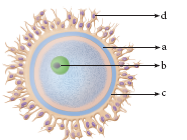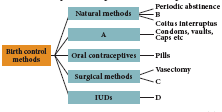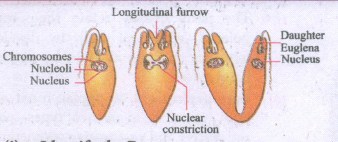- State Board
-
12th Standard
-

Biology
-

Computer Applications
-

Computer Science
-

Business Maths and Statistics
-

Commerce
-

Economics
-

Maths
-

Chemistry
-

Physics
-

Computer Technology
-

History
-

Accountancy
-

Tamil
-

Maths
-

Chemistry
-

Physics
-

Biology
-

Computer Science
-

Business Maths and Statistics
-

Economics
-

Commerce
-

Accountancy
-

History
-

Computer Applications
-

Computer Technology
-

English
12th Standard stateboard question papers & Study material
தமிழ் Subjects
English Subjects
-
-
11th Standard
-

Maths
-

Biology
-

உயிரியல் - தாவரவியல்
-

Economics
-

Physics
-

Chemistry
-

History
-

Business Maths and Statistics
-

Computer Science
-

Accountancy
-

Commerce
-

Computer Applications
-

Computer Technology
-

Tamil
-

Maths
-

Commerce
-

Economics
-

Biology
-

Business Maths and Statistics
-

Accountancy
-

Computer Science
-

Physics
-

Chemistry
-

Computer Applications
-

History
-

Computer Technology
-

Tamil
-

English
11th Standard stateboard question papers & Study material
தமிழ் Subjects
English Subjects
-
-
9th Standard
-

-

-

-

-

-

-

Maths
-

Science
-

Social Science
-

Maths
-

Science
-

Social Science
9th Standard stateboard question papers & Study material
தமிழ் Subjects
English Subjects
-
-
6th Standard
-

Maths
-

Science
-

Social Science
-

Maths
-

Science
-

Social Science
6th Standard stateboard question papers & Study material
தமிழ் Subjects
English Subjects
-
-
10th Standard
-

Maths
-

Science
-

Social Science
-

Tamil
-

Maths
-

Science
-

Social Science
-

English
-

English
10th Standard stateboard question papers & Study material
தமிழ் Subjects
English Subjects
-
-
7th Standard
-

Maths
-

Science
-

Maths
-

Science
-

Social Science
7th Standard stateboard question papers & Study material
தமிழ் Subjects
English Subjects
-
-
8th Standard
-

கணிதம் - old
-

Science
-

Social Science
-

கணிதம்
-

Maths
-

Science
-

Social Science
8th Standard stateboard question papers & Study material
தமிழ் Subjects
English Subjects
-
-
12th Standard
- CBSE Board
-
12th Standard CBSE
-

Biology
-

Chemistry
-

Physics
-

Maths
-

Accountancy
-

Business Studies
-

Economics
-

Introductory Micro and Macroeconomics
-

Computer Science
-

Geography
-

English
-

History
-

Indian Society
-

Physical Education
-

Sociology
-

Political Science
-

Engineering Graphics
-

Bio Technology
-

Entrepreneurship
-

Hindi Elective
-

Home Science
-

Legal Studies
-

Psychology
-

Hindi Core
-

Tamil
12th Standard CBSE Subject Question Paper & Study Material
-
-
11th Standard CBSE
-

Physics
-

Mathematics
-

Chemistry
-

Biology
-

Economics
-

Business Studies
-

Accountancy
-

Computer Science
-

English
-

Geography
-

History
-

Physical Education
-

Psychology
-

Sociology
-

Bio Technology
-

Enterprenership
-

Hindi
-

Home Science
-

Political Science
-

Applied Mathematics
11th Standard CBSE Subject Question Paper & Study Material
-
- 10th Standard CBSE
-
9th Standard CBSE
-

Social Science
-

Mathematics
-

Science
-

English
-

Hindi
9th Standard CBSE Subject Question Paper & Study Material
-
-
8th Standard CBSE
-

Social Science
-

Science
-

Mathematics
-

English
8th Standard CBSE Subject Question Paper & Study Material
-
-
7th Standard CBSE
-

Social Science
-

Science
-

Mathematics
-

English
7th Standard CBSE Subject Question Paper & Study Material
-
-
6th Standard CBSE
-

Social Science
-

Science
-

Mathematics
-

English
6th Standard CBSE Subject Question Paper & Study Material
-
-
12th Standard CBSE
- Free Online Test
- News
- Study Materials
-
Students
-

Stateboard Tamil Nadu
-

CBSE Board
-

Free Online Tests
-

Educational News
-

Scholarships
-

Entrance Exams India
-

Video Materials
Study Materials , News and Scholarships
-
-
Students

12th Standard Biology English Medium - Revision Model Question Paper with Answer Key 2022 - 2023 Study Materials Dec-31 , 2022
QB365 provides a detailed and simple solution for every Possible Questions in Class 12 Biology Subject - Revision Model Question Paper, English Medium. It will help Students to get more practice questions, Students can Practice these question papers in addition to score best marks.
12th Standard Biology Revision Model Question Paper With Answer Key
12th Standard
-
Reg.No. :
Biology
Time :
02:30:00 Hrs
Total Marks :
70
-
The mode of sexual reproduction in bacteria is by ______.
(a)Formation of gametes
(b)Endospore formation
(c)Conjugation
(d)Zoospore formation
-
The foetal membrane that forms the basis of the umbilical cord is _____.
(a)Allantois
(b)Amnion
(c)Chorion
(d)Yolk sac
-
Which of the following statements about DNA replication is not correct?
(a)Unwinding of DNA molecule occurs as hydrogen bonds break.
(b)Replication occurs as each base is paired with another exactly like it
(c)Process is known as semi conservative replication because one old strand is conserved in the new molecule.
(d)Complementary base pairs are held together with hydrogen bonds
-
B cells that produce and release large amounts of antibody are called
(a)Memory cells
(b)Basophils
(c)Plasma cells
(d)killer cells
-
Cyclosporin – A is an immunosuppressive drug produced from _______
(a)Aspergillus niger
(b)Manascus purpureus
(c)Penicillium notatum
(d)Trichoderma polysporum
-
Which of the following is an r-species
(a)Human
(b)Insects
(c)Rhinoceros
(d)Whale
-
Right to Clean Water is a fundamental right, under the Indian Constitution
(a)Article 12
(b)Article 21
(c)Article 31
(d)Article 41
-
Match the following
I) External fertilization i) pollen grain II) Androecium ii) anther wall III) Male gametophyte iii) algae IV) Primary parietal layer iv) stamens (a)I II III IV iv i ii iii (b)I II III IV iii iv i ii (c)I II III IV iii iv ii i (d)I II III IV iii i iv ii -
In pea plants, yellow seeds are dominant to green. If a heterozygous yellow seed plant is crossed with a green seeded plant, what ratio of yellow and green seeded plants would you expect in F1 generation?
(a)9:1
(b)1:3
(c)3:1
(d)50:50
-
Restriction enzymes are _____.
(a)Not always required in genetic engineering
(b)Essential tools in genetic engineering
(c)Nucleases that cleave DNA at specific sites
(d)both b and c
-
Ecology is the study of an individual species is called
i) Community ecology
ii) Autecology
iii) Species ecology
iv) Synecology(a)i only
(b)ii only
(c)i and iv only
(d)ii and iii only
-
Which of the following ecosystem has the highest primary productivity?
(a)Pond ecosystem
(b)Lake ecosystem
(c)Grassland ecosystem
(d)Forest ecosystem
-
The plants which are grown in silvopasture system are ______.
(a)Sesbania and Acacia
(b)Solenum and Crotalaria
(c)Clitoria and Begonia
(d)Teak and sandal
-
Colostrum provides
(a)Naturally acquired active immunity
(b)Naturally acquired passive immunity
(c)Artificially acquired active immunity
(d)Artificially acquired passive immunity
-
______ is not a feature of acquired immunity.
(a)diversity
(b)recognitionof self
(c)non-specific
(d)memory
-
At what stage of development are the gametes formed in new born male and female?
-
Name the parts marked ‘A’ and ‘B’ in the given transcription unit:
-
PCR is a useful tool for early diagnosis of an Infectious disease. Elaborate
-
What is reproduction?
-
What is the difference between missense and nonsense mutation?
-
What is the name of the process given below? Write its 4 types.
-
Give correct answers for the given questions below.
a. Identify the vegetative propagules
b: Label the part
c. Can offspring produced be considered as clone?
d. Write as the binomial of the above. -
Who rediscovered Mendel's results on the inheritance of characters?
-
Given below are the secondary metabolites. Mention their plant source.
(a) Digoxin
(b) Vincristine. -
The unicellular organisms which reproduce by binary fission are considered immortal. Justify
-
Identify the given image and label its parts marked as a, b, c and d

-
Select the correct term from the bracket and complete the given branching tree

(Barriers, Lactational amenorrhoea, CuT, Tubectomy) -
Differentiate between Tundra and Taiga Biomes.
-
Write the advantages and disadvantages of Bt cotton.
-
Differentiate between:
Autoimmune disease and Immunodeficiency disease -

(i) Identify the Process
(ii) Name the Organism -
Give the alternate terminologies for
(a) Spermatogonia
(b) Embryonic ectoderm -
Complete the table by filling the gaps.
Disease Causative agent Symptoms Gonnorrhea A Affects urethra & cervix, painful urination B Human Immuno Virus Enlarged lymph node, night sweat, weight
reductionHepatitis Hepatitis-B- Virus C -
-
The following is the illustration of the sequence of ovarian events (a-i) in a human female.

a) Identify the figure that illustrates ovulation and mention the stage of oogenesis it represents.
b) Name the ovarian hormone and the pituitary hormone that have caused the above-mentioned events.
c) Explain the changes that occurs in the uterus simultaneously in anticipation.
d) Write the difference between C and H. -
a) Identify the figure given below
b) Redraw the structure as a replicating fork and label the parts
c) Write the source of energy for this replication and name the enzyme involved in this process.
d) Mention the differences in the synthesis of protein, based on the polarity of the two template strands.
-
-
-
Explain how “Rosie” is different from a normal cow
-
Describe dominant epistasis with an example.
-
-
-
Write the protocol for artificial seed preparation.
-
Write the economic importance of rice.
-
-
-
Write a note a extra embryonic membranes.
-
List out the causes of fertility in human.
-
-
-
Discuss the genic balance mechanism of sex determination with reference to Drosophila.
-
Write the salient features of Human Genome Project.
-
PART-I
Note : i
) All Questions Are Compulsory
ii) Choose The Most Suitable Answer From The Given
Four Correct Alternatives
15 x 1 = 15
PART-II
Note : i ) Answer any six questions and question number 24 in compulsory.
6 x 2 = 12
PART-III
Note : i ) Answer any six questions and question number 24 in compulsory.
6 x 3 = 18
PART-IV
Note : i
) Write all the following questions.
5 x 5 = 25
*****************************************
Answers
-
(c)
Conjugation
-
(a)
Allantois
-
(b)
Replication occurs as each base is paired with another exactly like it
-
(c)
Plasma cells
-
(d)
Trichoderma polysporum
-
(b)
Insects
-
(b)
Article 21
-
(b)
I II III IV iii iv i ii -
(d)
50:50
-
(d)
both b and c
-
(d)
ii and iii only
-
(d)
Forest ecosystem
-
(a)
Sesbania and Acacia
-
(b)
Naturally acquired passive immunity
-
(c)
non-specific






 12th Standard Biology Syllabus
12th Standard Biology Syllabus  12th Standard Biology Study Materials
12th Standard Biology Study Materials 12th Standard Biology MCQ Practise Tests
12th Standard Biology MCQ Practise Tests 

Reviews & Comments about 12th Standard Biology English Medium - Revision Model Question Paper with Answer Key 2022 - 2023
Write your Comment